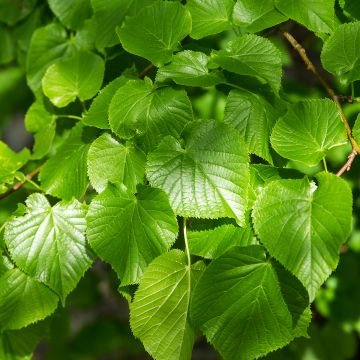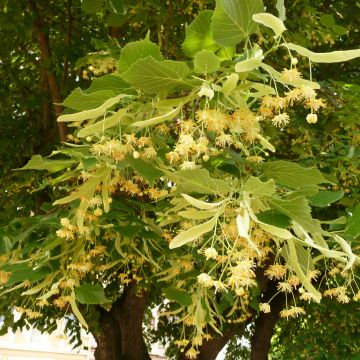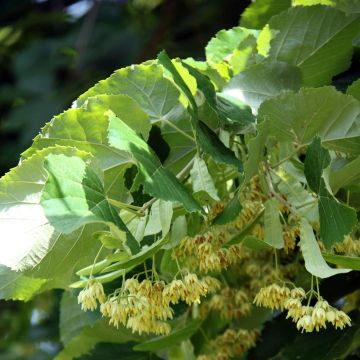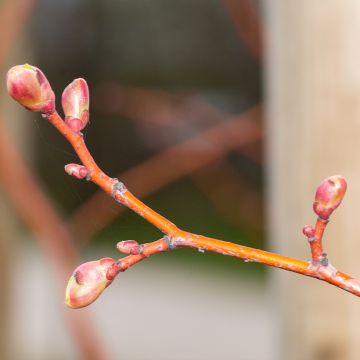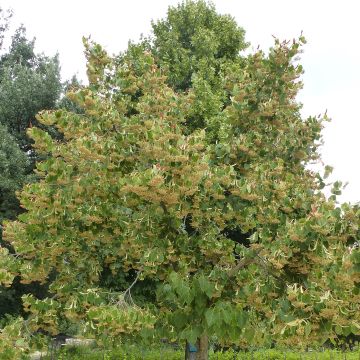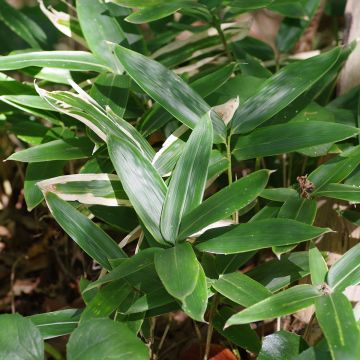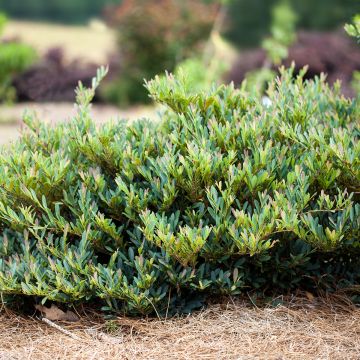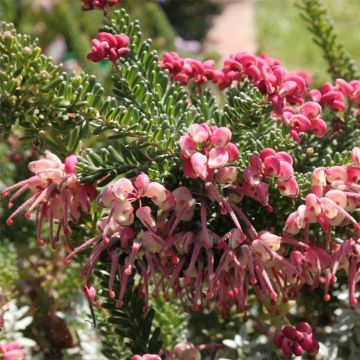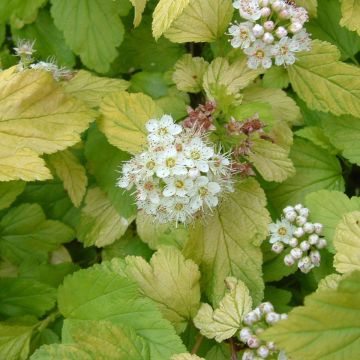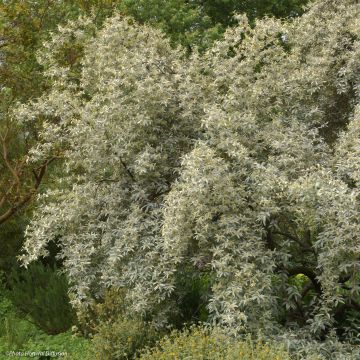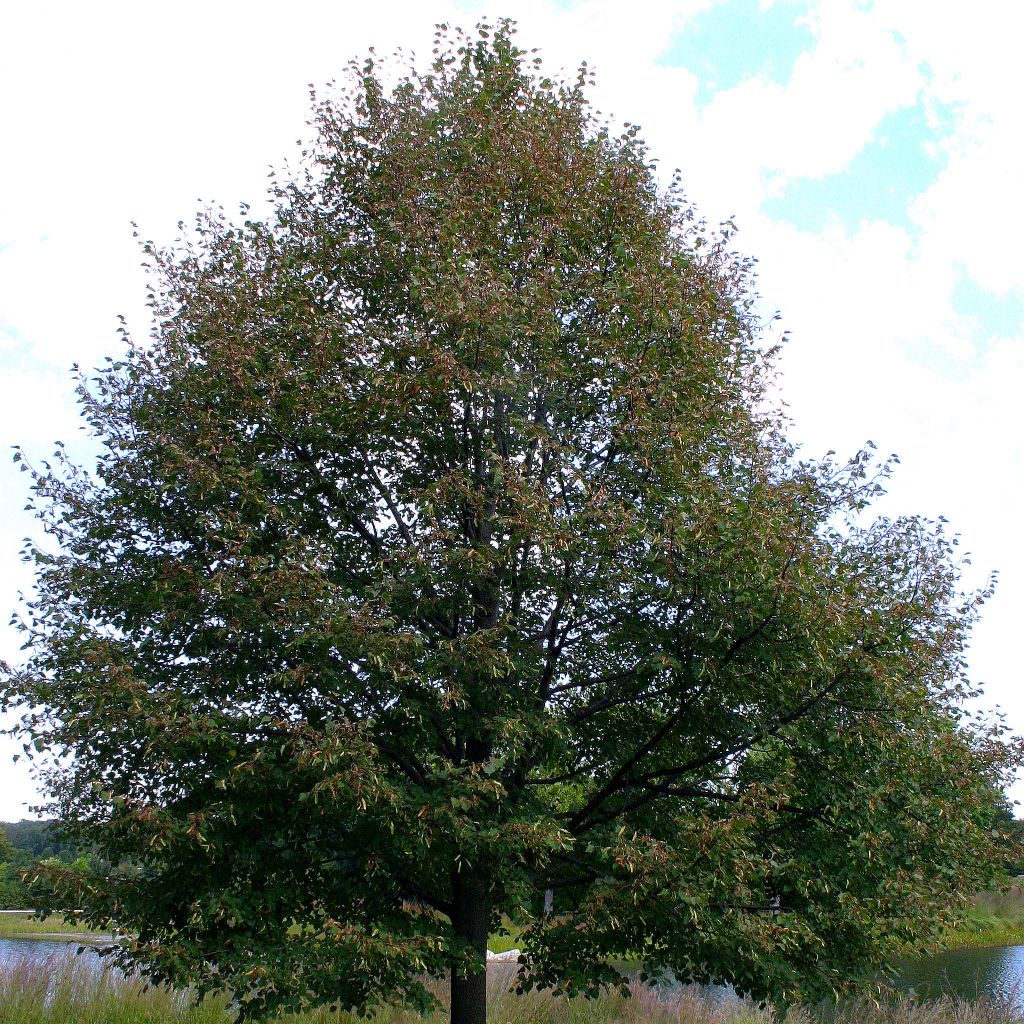

Tilia cordata Greenspire - Lime
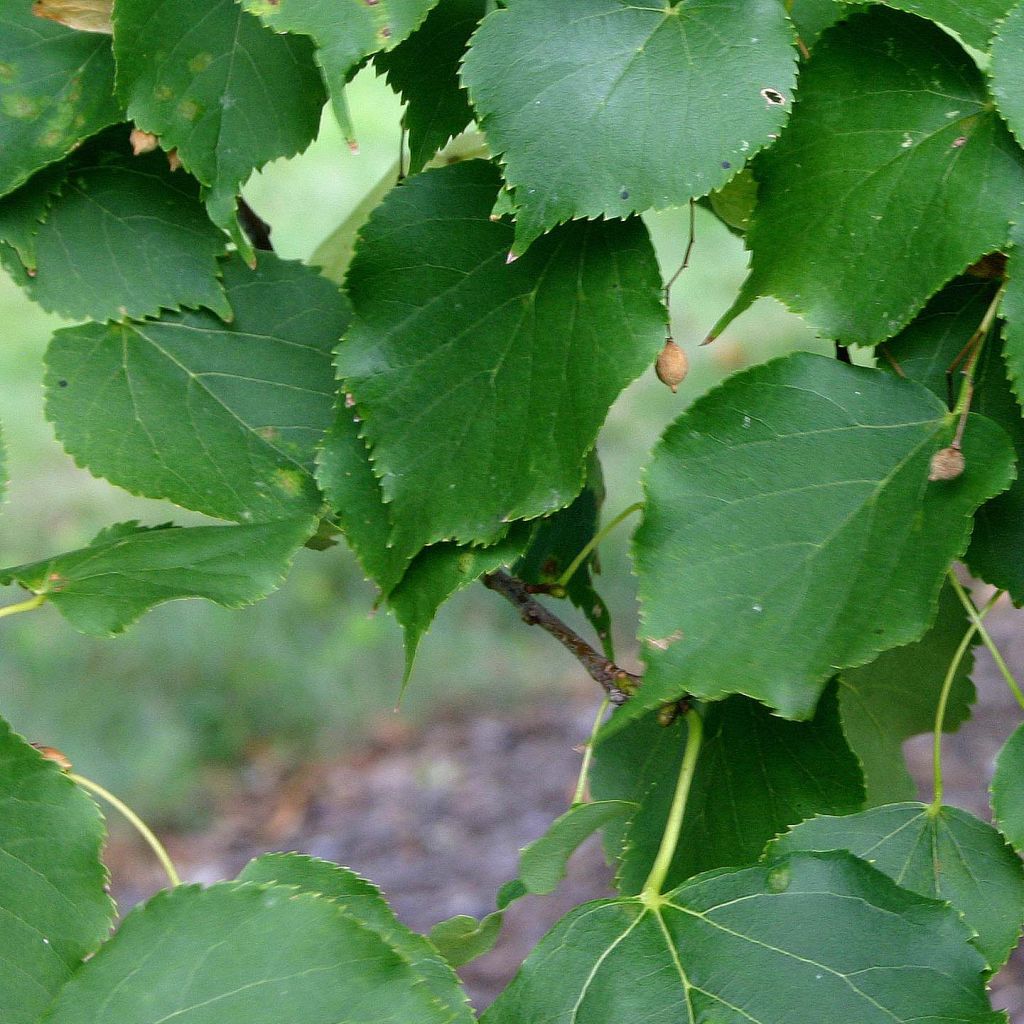

Tilia cordata Greenspire - Lime
Tilia cordata Greenspire - Lime
Tilia cordata Greenspire
Small-leaved Lime, Littleleaf Linden
Why not try an alternative variety in stock?
View all →This plant carries a 24 months recovery warranty
More information
We guarantee the quality of our plants for a full growing cycle, and will replace at our expense any plant that fails to recover under normal climatic and planting conditions.
Oversize package: home delivery by special carrier from €6.90 per order..
Express home delivery from €8.90.
Does this plant fit my garden?
Set up your Plantfit profile →
Description
Tilia cordata 'Greenspire', an American selection of small-leaved linden, is a shade tree with moderate development and rapid growth. It is less demanding than the species and better suited to our medium-sized gardens. The other advantages of this variety are a well-regulated, generally pyramidal crown, beautiful crevassed bark, a fragrant and honey-bearing flowering in early summer, and ornamental glossy foliage, which is heart-shaped with a glaucous underside. This linden is also less prone to aphid attacks, which limits its maintenance. It is valued for its accommodating nature: this tree is undemanding regarding soil as long as it remains moist, and it tolerates both sea spray and urban pollution.
Tilia cordata (synonym Tilia parviflora) belongs to the Malvaceae family. It is native to European forests. It is a deciduous tree with a wide crown, capable of exceeding 30m (98ft) in height. It grows in moist, deep, fertile, acidic to neutral soil. Its longevity is excellent.
The cultivar 'Greenspire', selected in New Jersey (USA) in 1961, distinguishes itself by less significant development, a narrower crown, slightly larger leaves, and its ease of cultivation in less favourable conditions. The growth of this tree is rapid; it will reach maturity with an average height of 16m (52ft) and a spread of 12m (39ft). When young, it has a narrow pyramidal habit, then it widens to form a well-branched ovoid crown on top of a rather short trunk: its branches show rather ascending development. The bark, when mature, is dark brown and channelled, while the young twigs are smooth and green to reddish-brown. Its entire, alternate leaves, 7 to 12cm (3 to 5in) long, are rounded, heart-shaped at the base, and finely toothed at the edges. The lamina is shiny green on the upper side, with a downy glaucous underside adorned with reddish hairs. The leaves turn golden yellow in autumn and fall quite early in the season. The flowering takes place in early summer, in June-July. Numerous small white-yellowish flowers are gathered in pendulous corymbs, in groups of 15 to 20, and attached to the twigs by a long petiole. The flowers are remarkably fragrant and popular with bees. They are followed by small globular grey and smooth fruits attached to a wing called a samara.
'Greenspire' can be planted as a fast-growing standalone shade tree. It is easy to cultivate in many regions. Place it near the entrance of a well-maintained garden, accompanied by evergreen shrubs like the elegant Taxus x media 'Densiformis' or other dwarf conifers. In a more rustic spirit, you can plant it with the Persian Parrotia or x Sycoparrotia, similar but with semi-evergreen foliage, interesting for their autumn colours. Use it for example in a large bed, accompanied by maples (Acer campestre, A. griseum, A. monspessulanum), the Quince tree, Pseudocydonia sinensis, and Winged Euonymus (Euonymus alatus) to create a vibrant grove from September to November. Its flowers are an important source of nectar, valuable to those who raise bees. A Japanese Medlar, flowering in October-November with a scent of bitter almond, will also have this nourishing role in a scented garden.
Report an error about the product description
Tilia cordata Greenspire - Lime in pictures
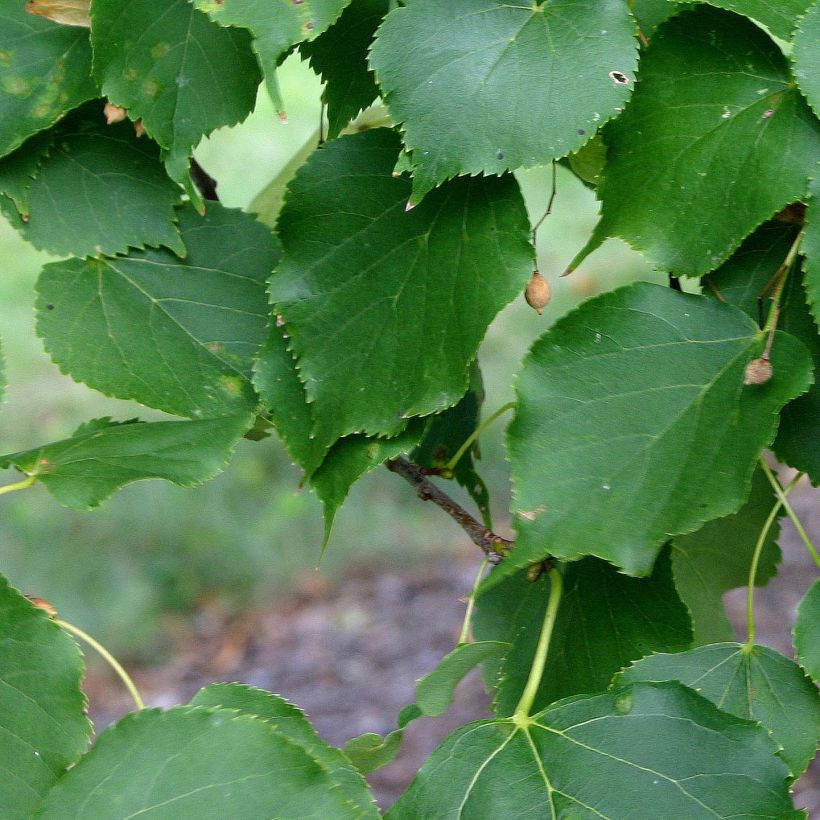

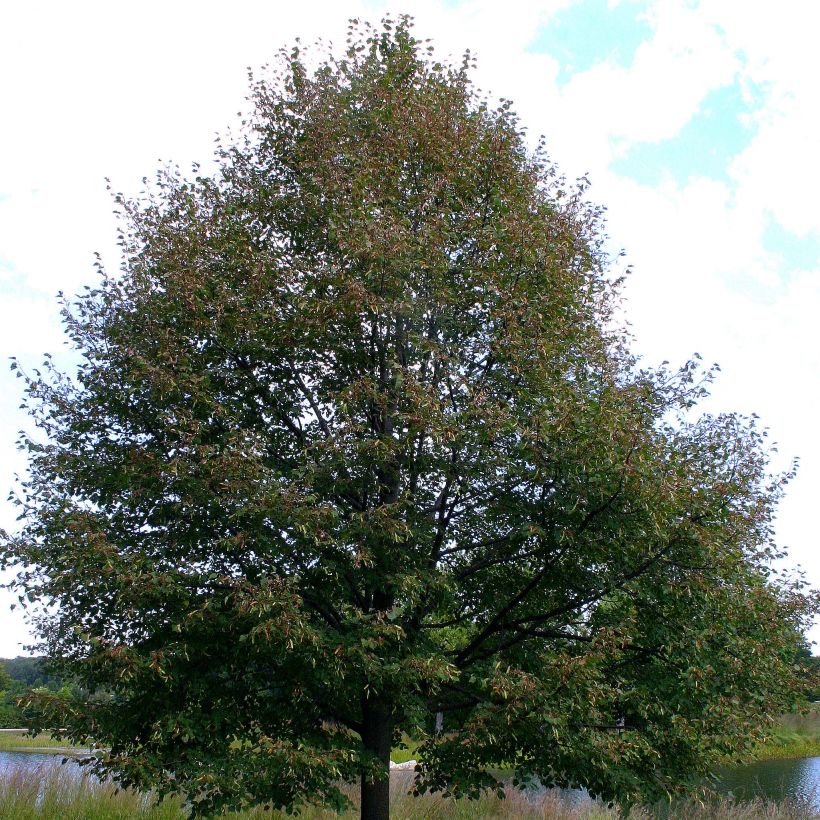

Plant habit
Flowering
Foliage
Botanical data
Tilia
cordata
Greenspire
Tiliaceae
Small-leaved Lime, Littleleaf Linden
Central Europe
Other Tilia - Linden
Planting and care
Plant in autumn or spring. It is hardy and not very demanding in terms of soil. It tolerates wind and sea spray quite well. It requires a sunny exposure or, at worst, semi-shaded. It dreads overly dry soils, but tolerates both acidic and calcareous soils, although not too poor. A deep, fertile, and moist soil, well loosened, will ensure optimal growth. During the first few years, practice training pruning by removing lower branches to allow for easy movement under the tree.
Planting period
Intended location
Care
-
, onOrder confirmed
Reply from on Promesse de fleurs
Striking foliage shrubs
Haven't found what you were looking for?
Hardiness is the lowest winter temperature a plant can endure without suffering serious damage or even dying. However, hardiness is affected by location (a sheltered area, such as a patio), protection (winter cover) and soil type (hardiness is improved by well-drained soil).

Photo Sharing Terms & Conditions
In order to encourage gardeners to interact and share their experiences, Promesse de fleurs offers various media enabling content to be uploaded onto its Site - in particular via the ‘Photo sharing’ module.
The User agrees to refrain from:
- Posting any content that is illegal, prejudicial, insulting, racist, inciteful to hatred, revisionist, contrary to public decency, that infringes on privacy or on the privacy rights of third parties, in particular the publicity rights of persons and goods, intellectual property rights, or the right to privacy.
- Submitting content on behalf of a third party;
- Impersonate the identity of a third party and/or publish any personal information about a third party;
In general, the User undertakes to refrain from any unethical behaviour.
All Content (in particular text, comments, files, images, photos, videos, creative works, etc.), which may be subject to property or intellectual property rights, image or other private rights, shall remain the property of the User, subject to the limited rights granted by the terms of the licence granted by Promesse de fleurs as stated below. Users are at liberty to publish or not to publish such Content on the Site, notably via the ‘Photo Sharing’ facility, and accept that this Content shall be made public and freely accessible, notably on the Internet.
Users further acknowledge, undertake to have ,and guarantee that they hold all necessary rights and permissions to publish such material on the Site, in particular with regard to the legislation in force pertaining to any privacy, property, intellectual property, image, or contractual rights, or rights of any other nature. By publishing such Content on the Site, Users acknowledge accepting full liability as publishers of the Content within the meaning of the law, and grant Promesse de fleurs, free of charge, an inclusive, worldwide licence for the said Content for the entire duration of its publication, including all reproduction, representation, up/downloading, displaying, performing, transmission, and storage rights.
Users also grant permission for their name to be linked to the Content and accept that this link may not always be made available.
By engaging in posting material, Users consent to their Content becoming automatically accessible on the Internet, in particular on other sites and/or blogs and/or web pages of the Promesse de fleurs site, including in particular social pages and the Promesse de fleurs catalogue.
Users may secure the removal of entrusted content free of charge by issuing a simple request via our contact form.
The flowering period indicated on our website applies to countries and regions located in USDA zone 8 (France, the United Kingdom, Ireland, the Netherlands, etc.)
It will vary according to where you live:
- In zones 9 to 10 (Italy, Spain, Greece, etc.), flowering will occur about 2 to 4 weeks earlier.
- In zones 6 to 7 (Germany, Poland, Slovenia, and lower mountainous regions), flowering will be delayed by 2 to 3 weeks.
- In zone 5 (Central Europe, Scandinavia), blooming will be delayed by 3 to 5 weeks.
In temperate climates, pruning of spring-flowering shrubs (forsythia, spireas, etc.) should be done just after flowering.
Pruning of summer-flowering shrubs (Indian Lilac, Perovskia, etc.) can be done in winter or spring.
In cold regions as well as with frost-sensitive plants, avoid pruning too early when severe frosts may still occur.
The planting period indicated on our website applies to countries and regions located in USDA zone 8 (France, United Kingdom, Ireland, Netherlands).
It will vary according to where you live:
- In Mediterranean zones (Marseille, Madrid, Milan, etc.), autumn and winter are the best planting periods.
- In continental zones (Strasbourg, Munich, Vienna, etc.), delay planting by 2 to 3 weeks in spring and bring it forward by 2 to 4 weeks in autumn.
- In mountainous regions (the Alps, Pyrenees, Carpathians, etc.), it is best to plant in late spring (May-June) or late summer (August-September).
The harvesting period indicated on our website applies to countries and regions in USDA zone 8 (France, England, Ireland, the Netherlands).
In colder areas (Scandinavia, Poland, Austria...) fruit and vegetable harvests are likely to be delayed by 3-4 weeks.
In warmer areas (Italy, Spain, Greece, etc.), harvesting will probably take place earlier, depending on weather conditions.
The sowing periods indicated on our website apply to countries and regions within USDA Zone 8 (France, UK, Ireland, Netherlands).
In colder areas (Scandinavia, Poland, Austria...), delay any outdoor sowing by 3-4 weeks, or sow under glass.
In warmer climes (Italy, Spain, Greece, etc.), bring outdoor sowing forward by a few weeks.


































